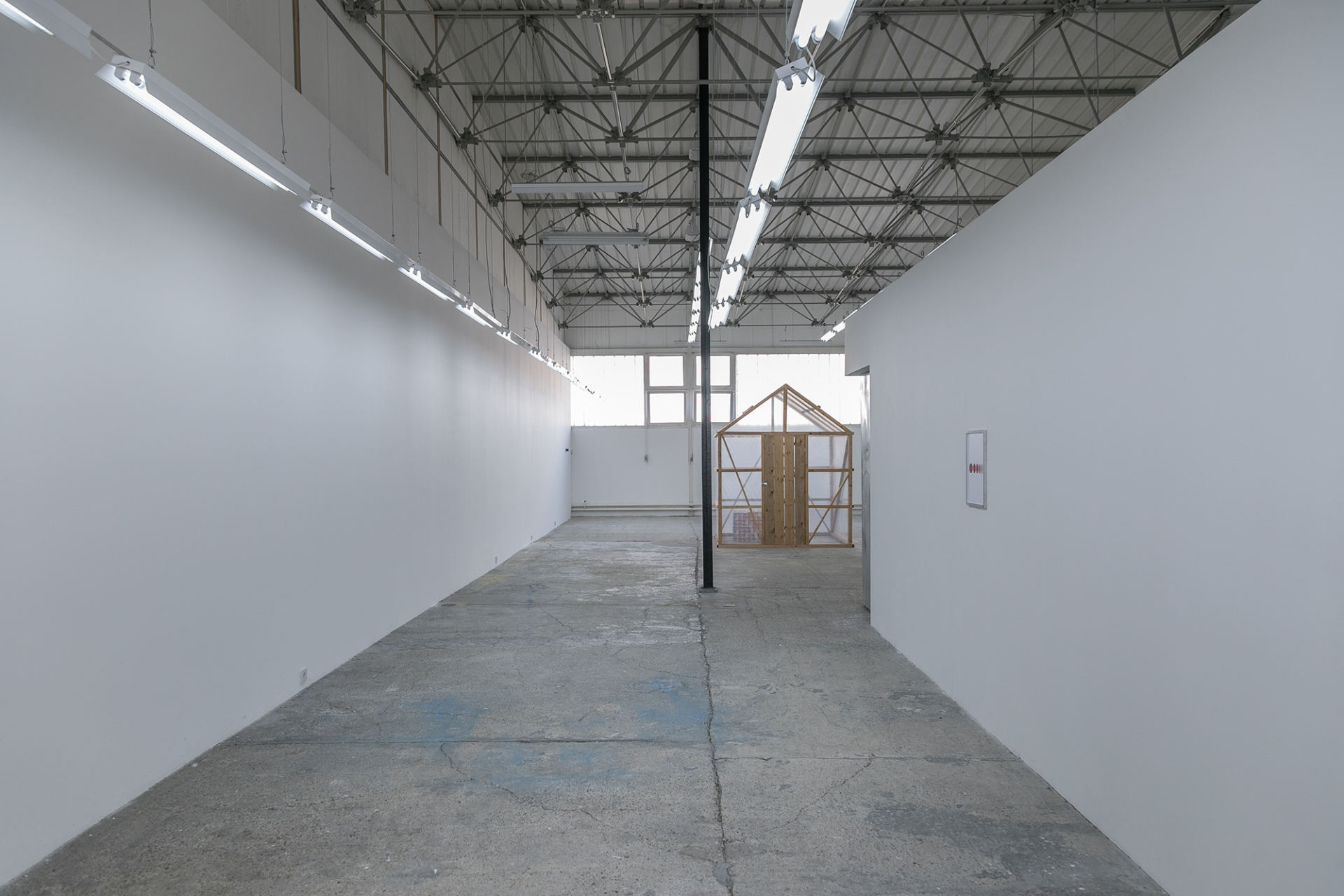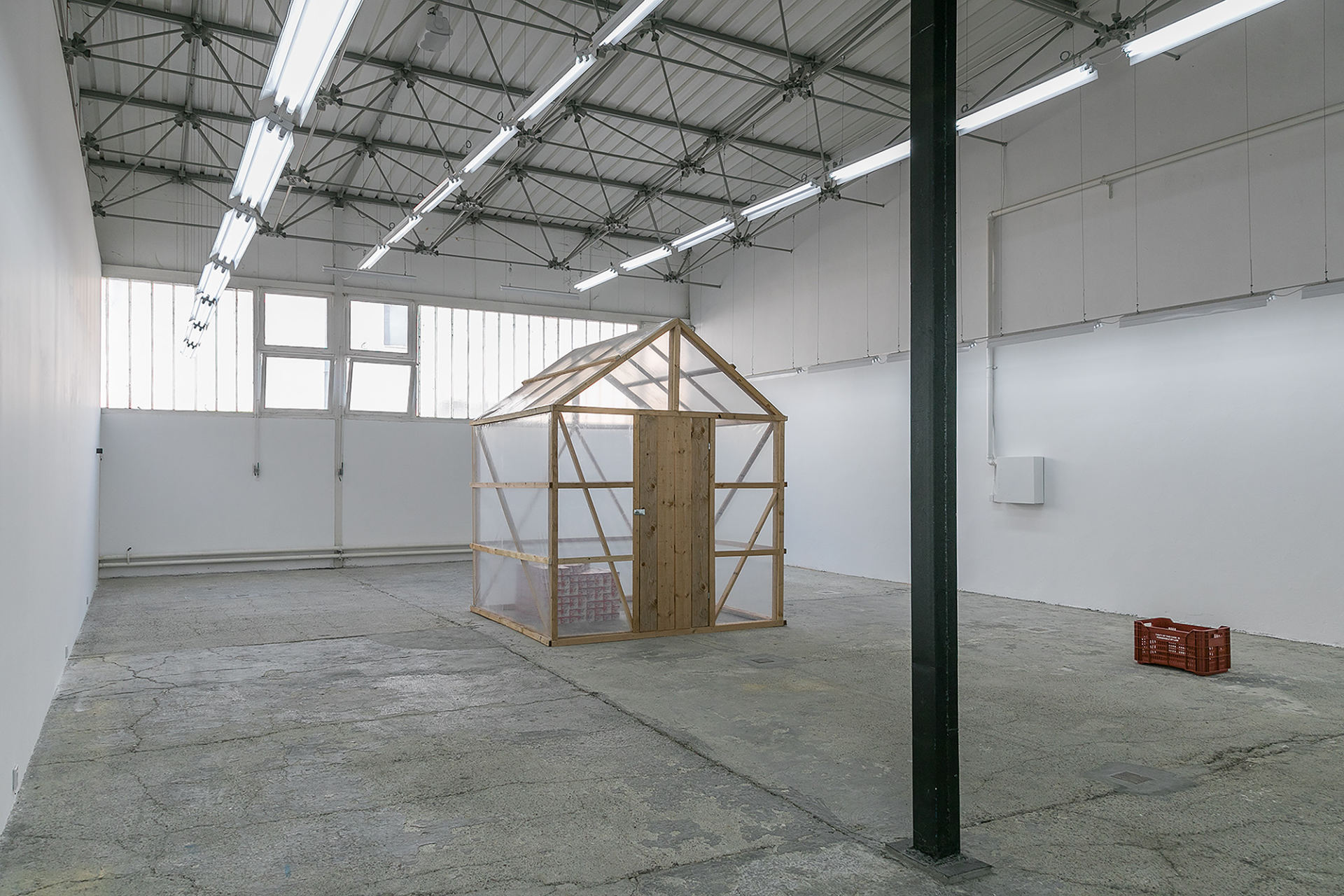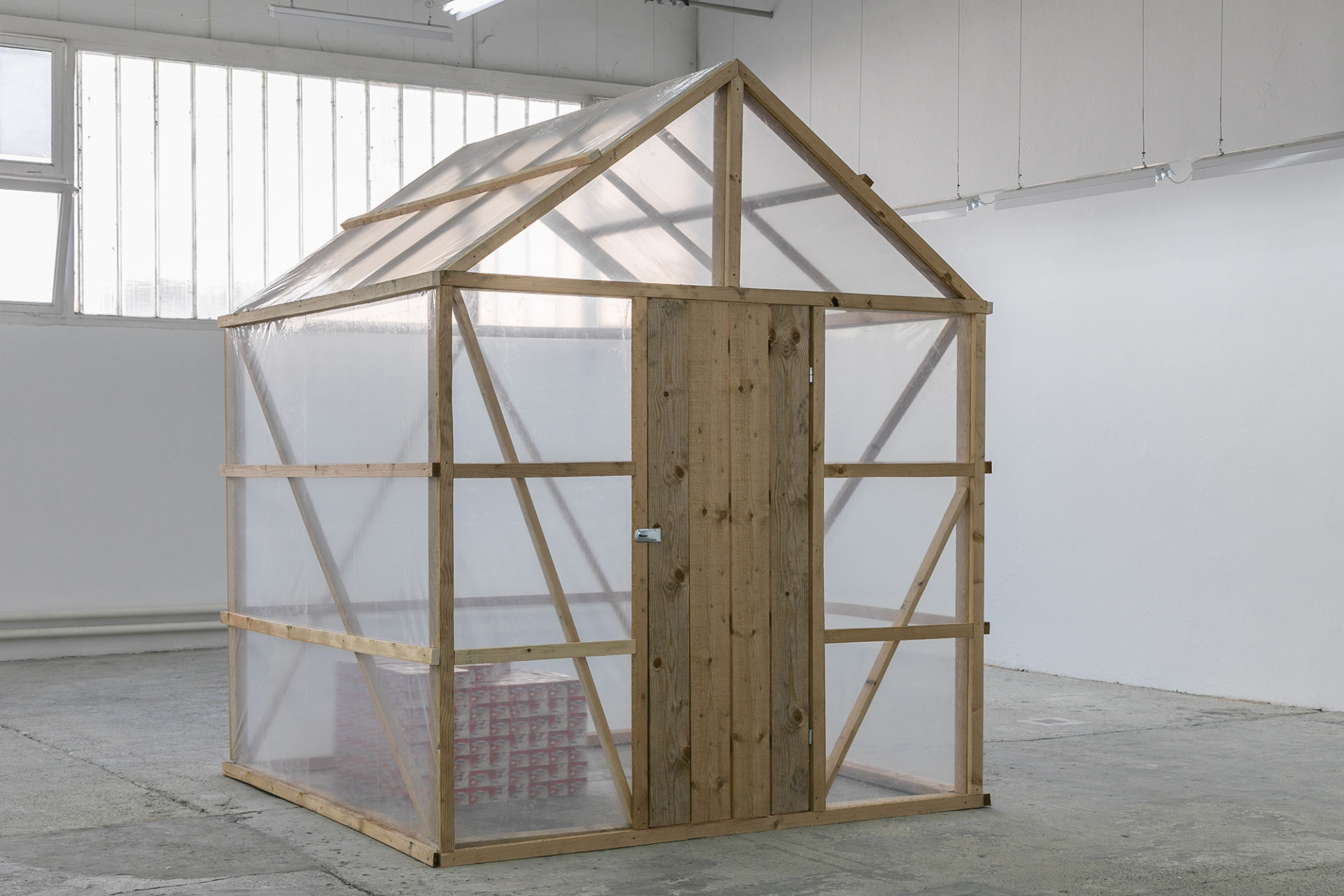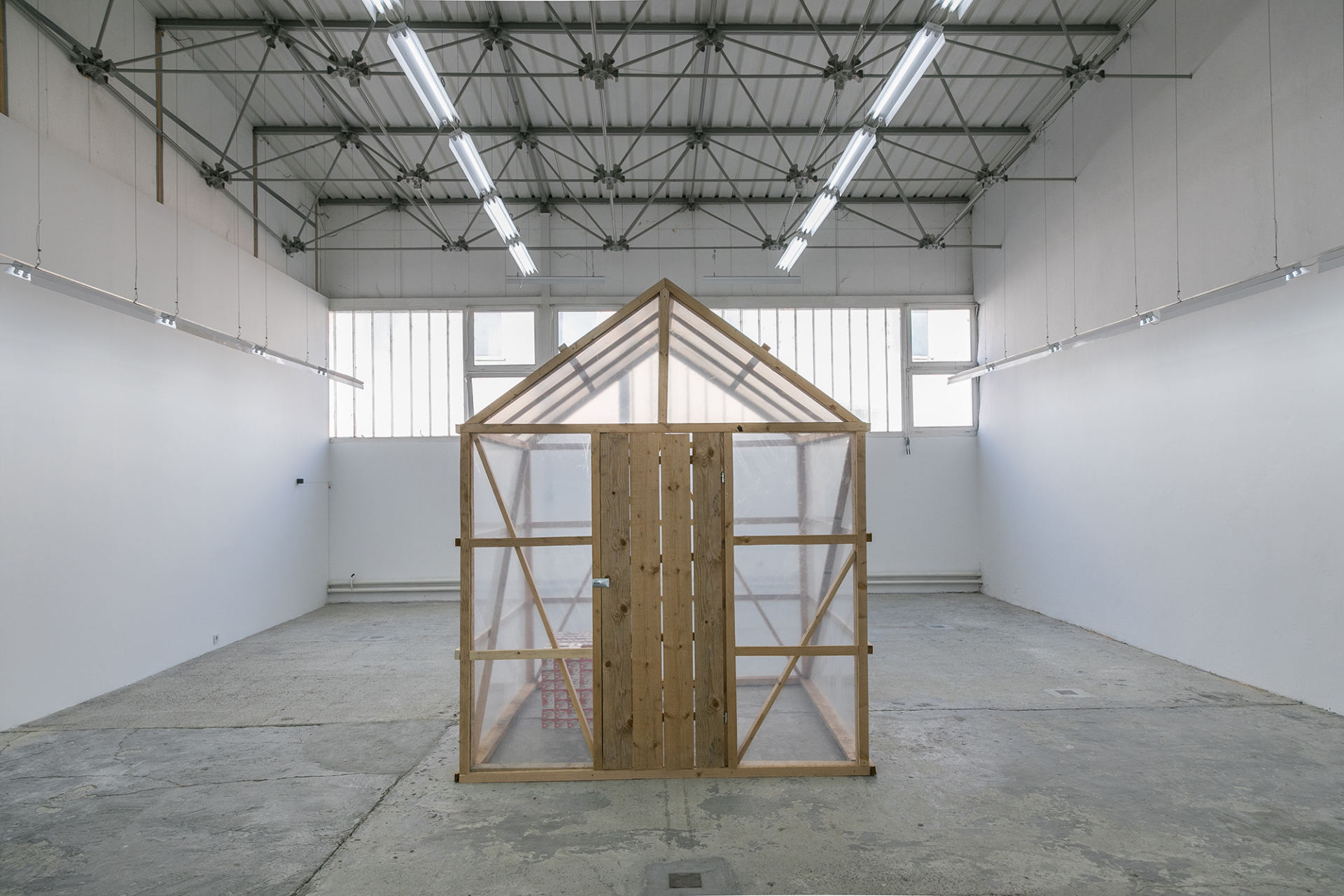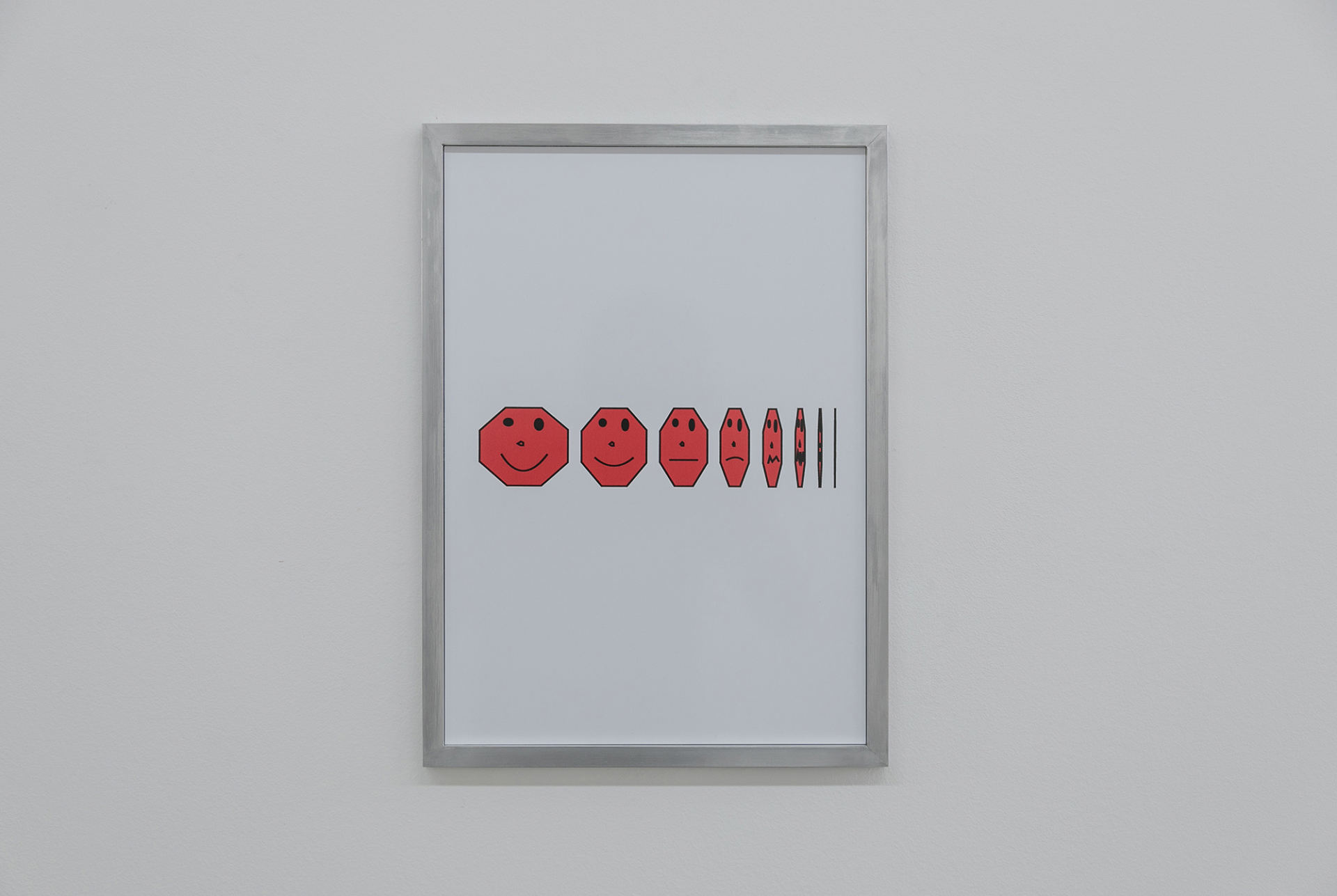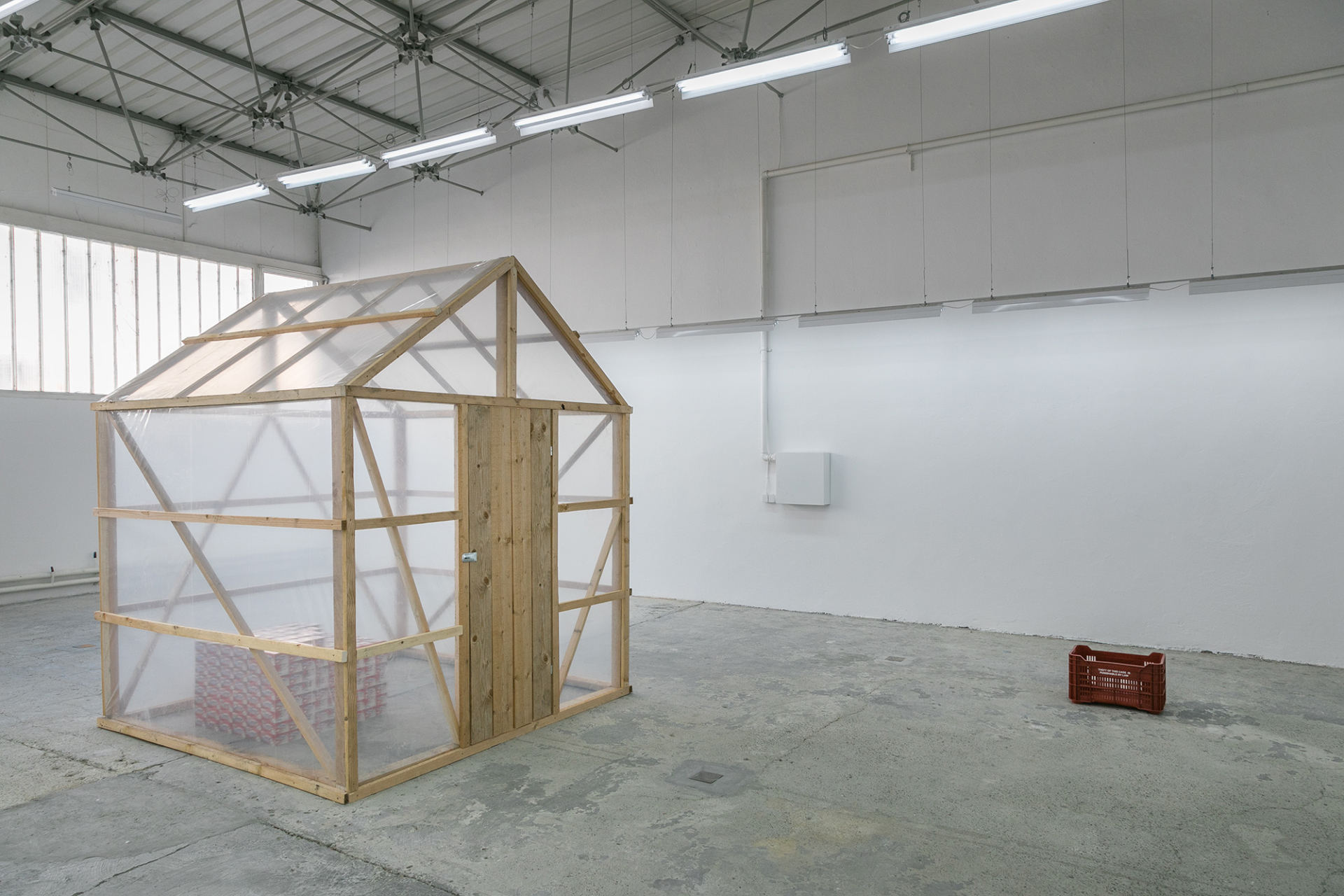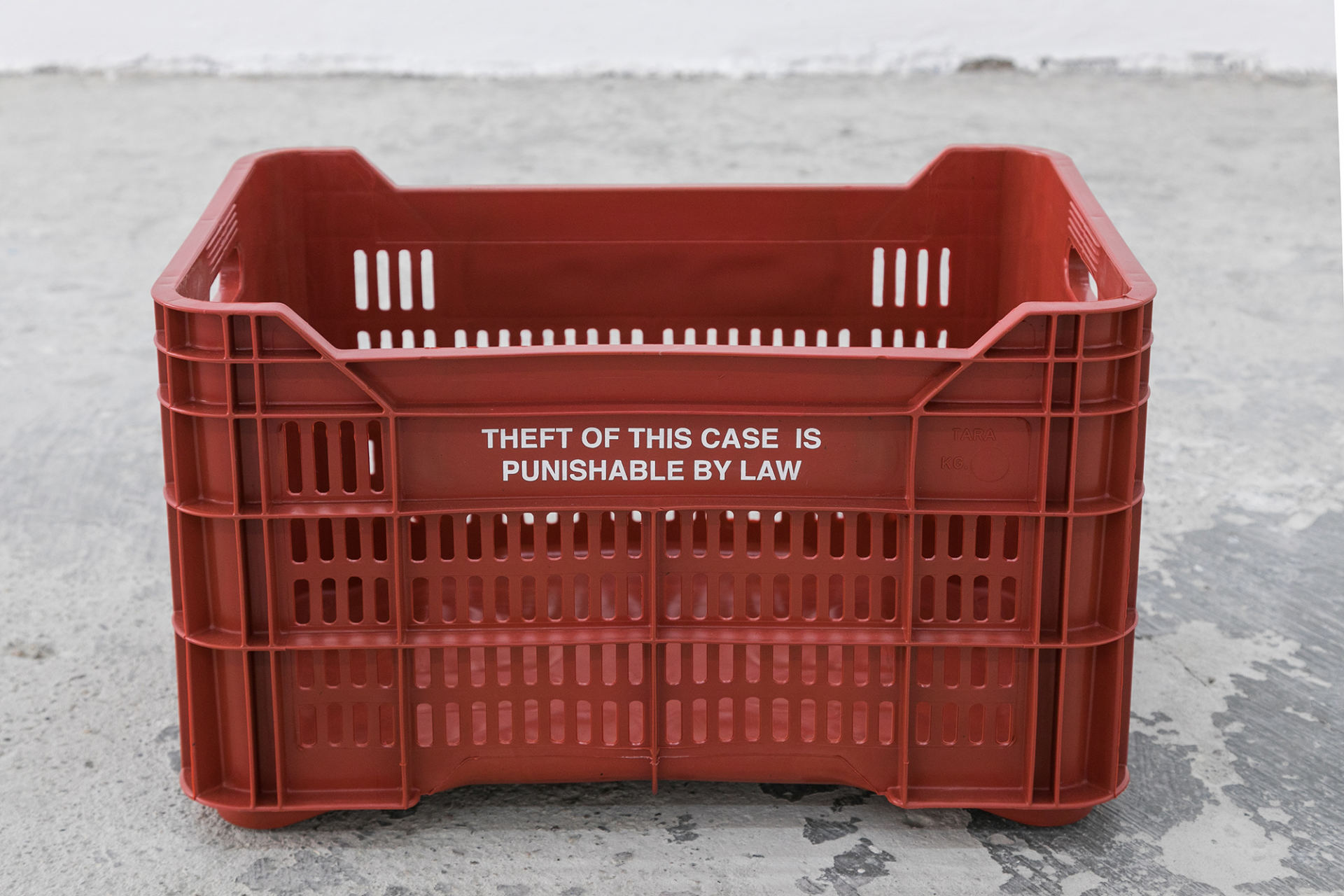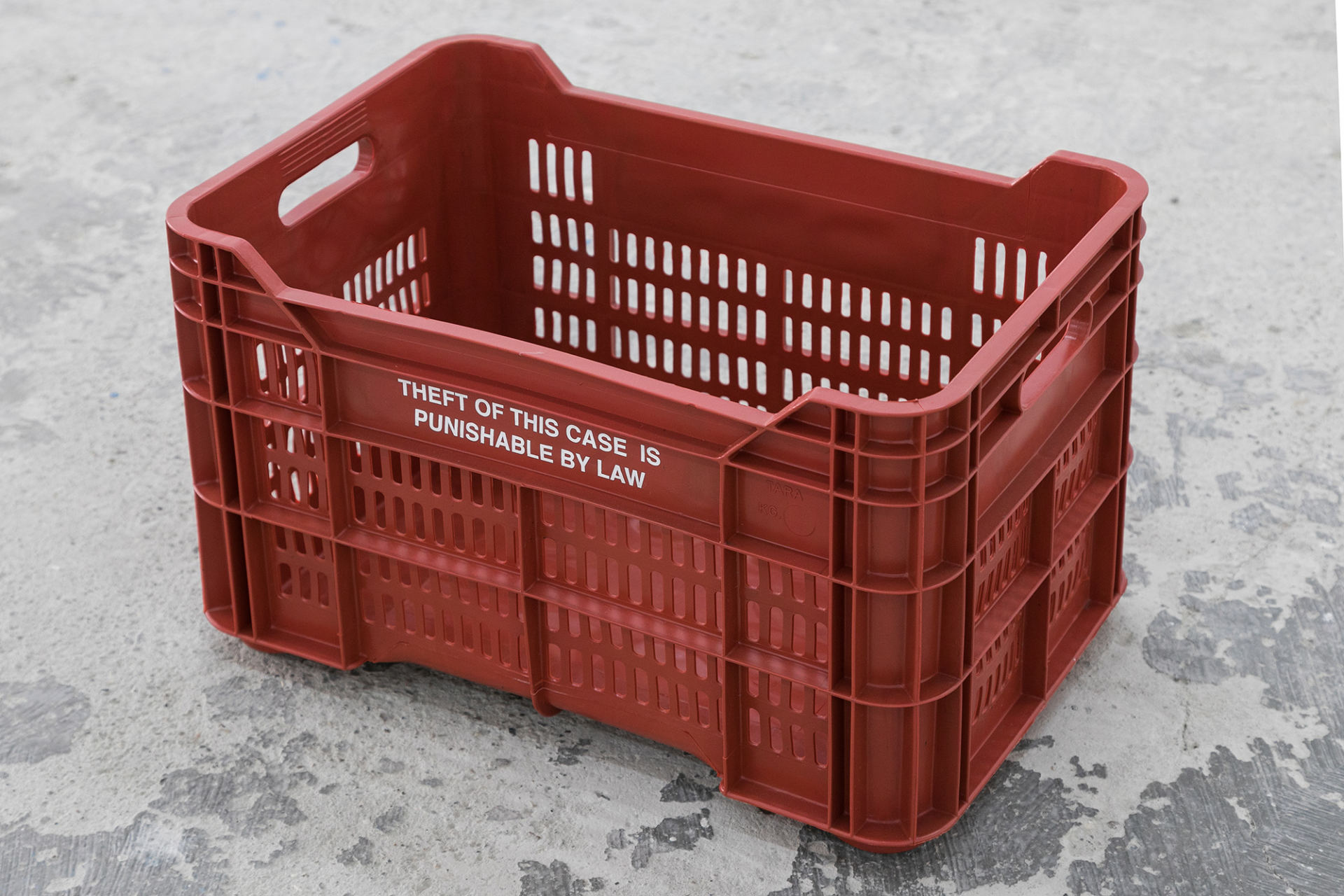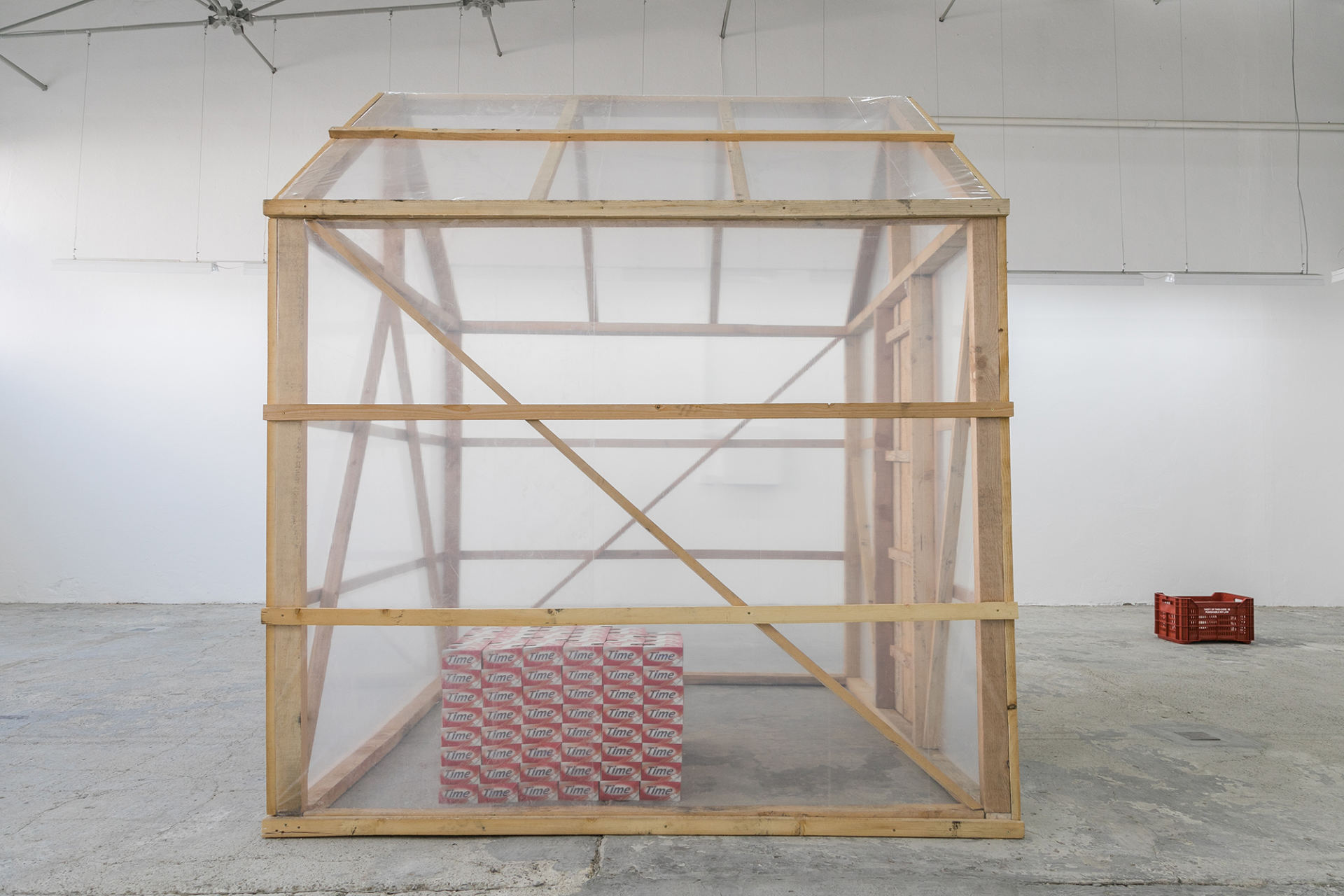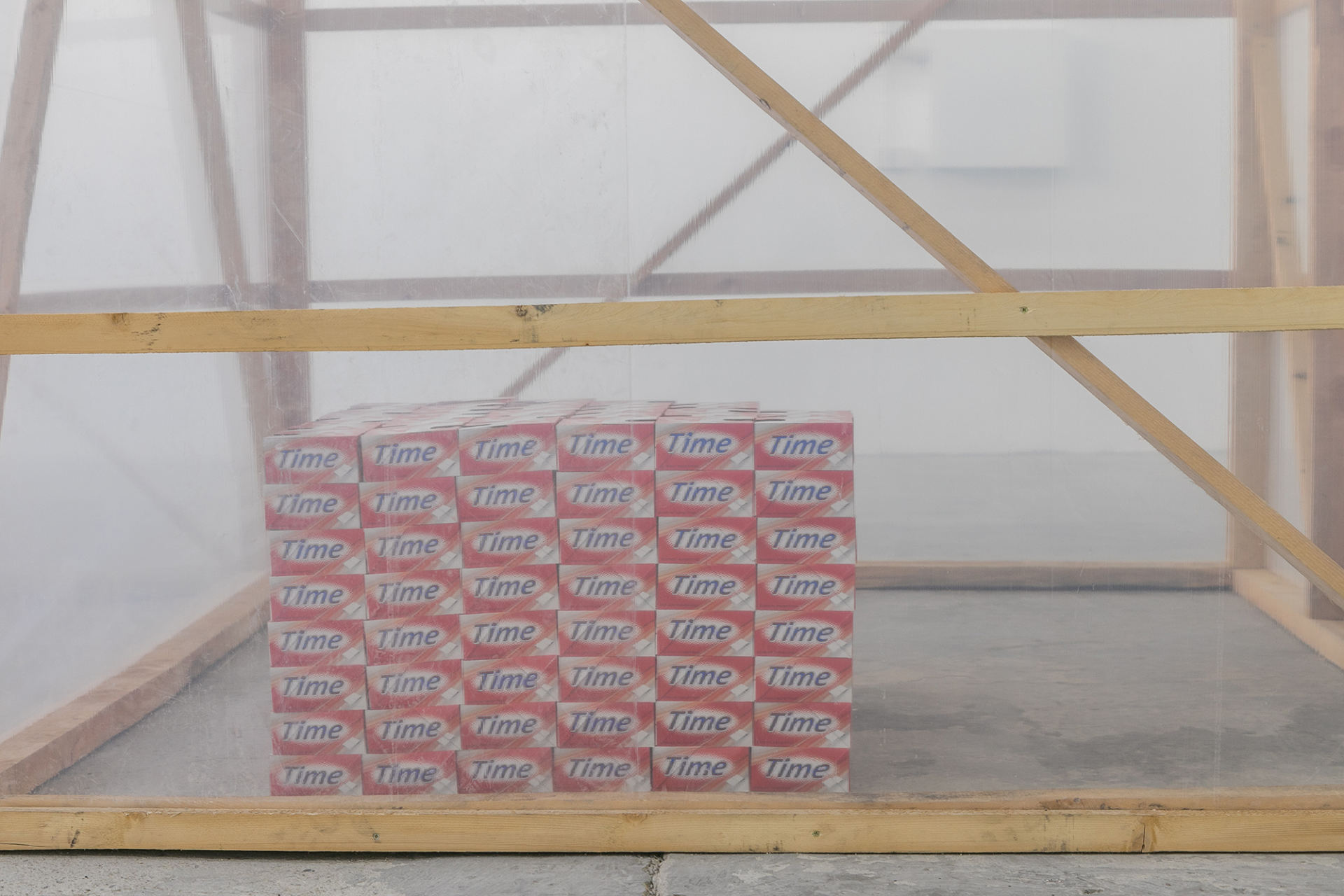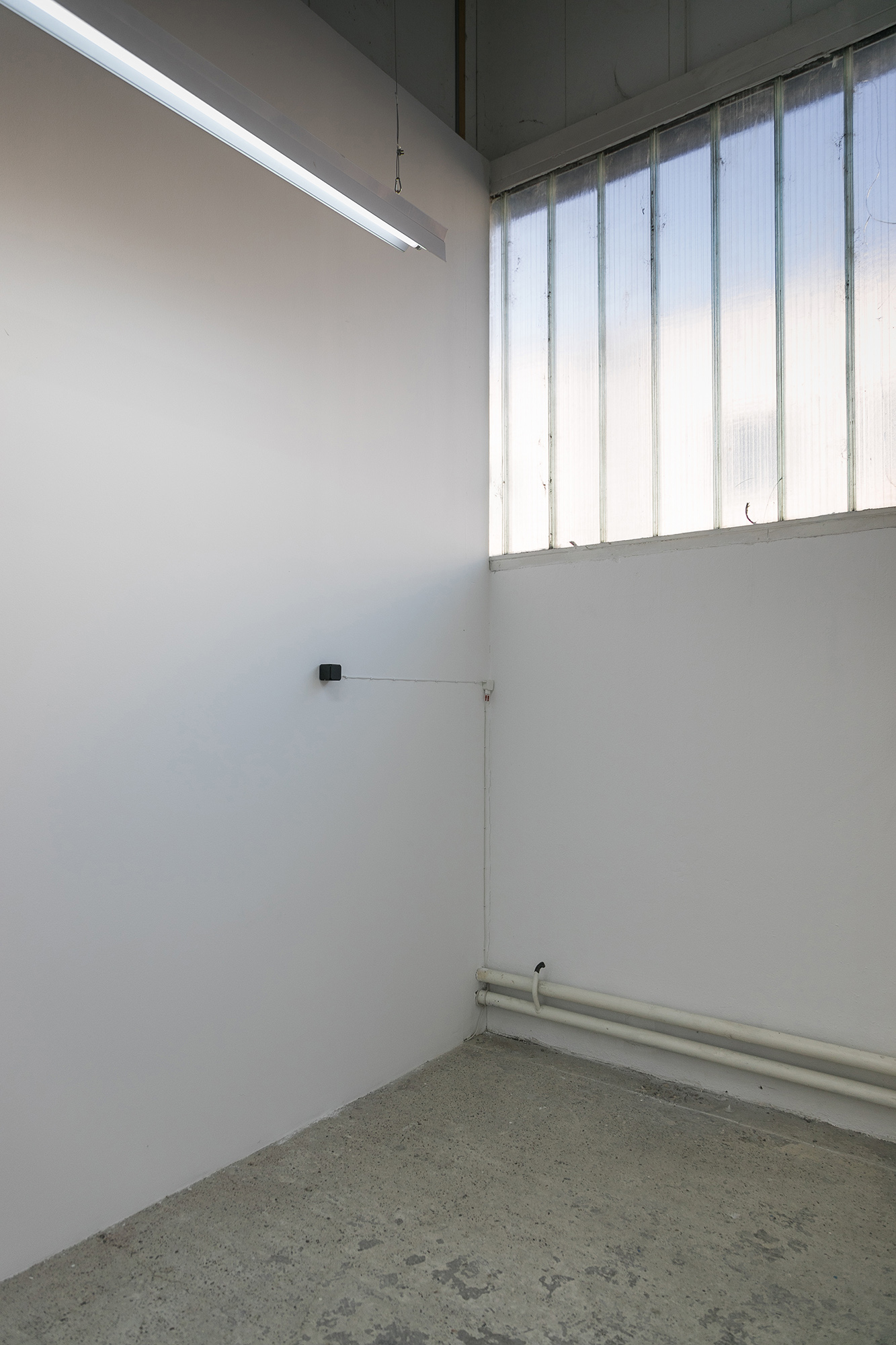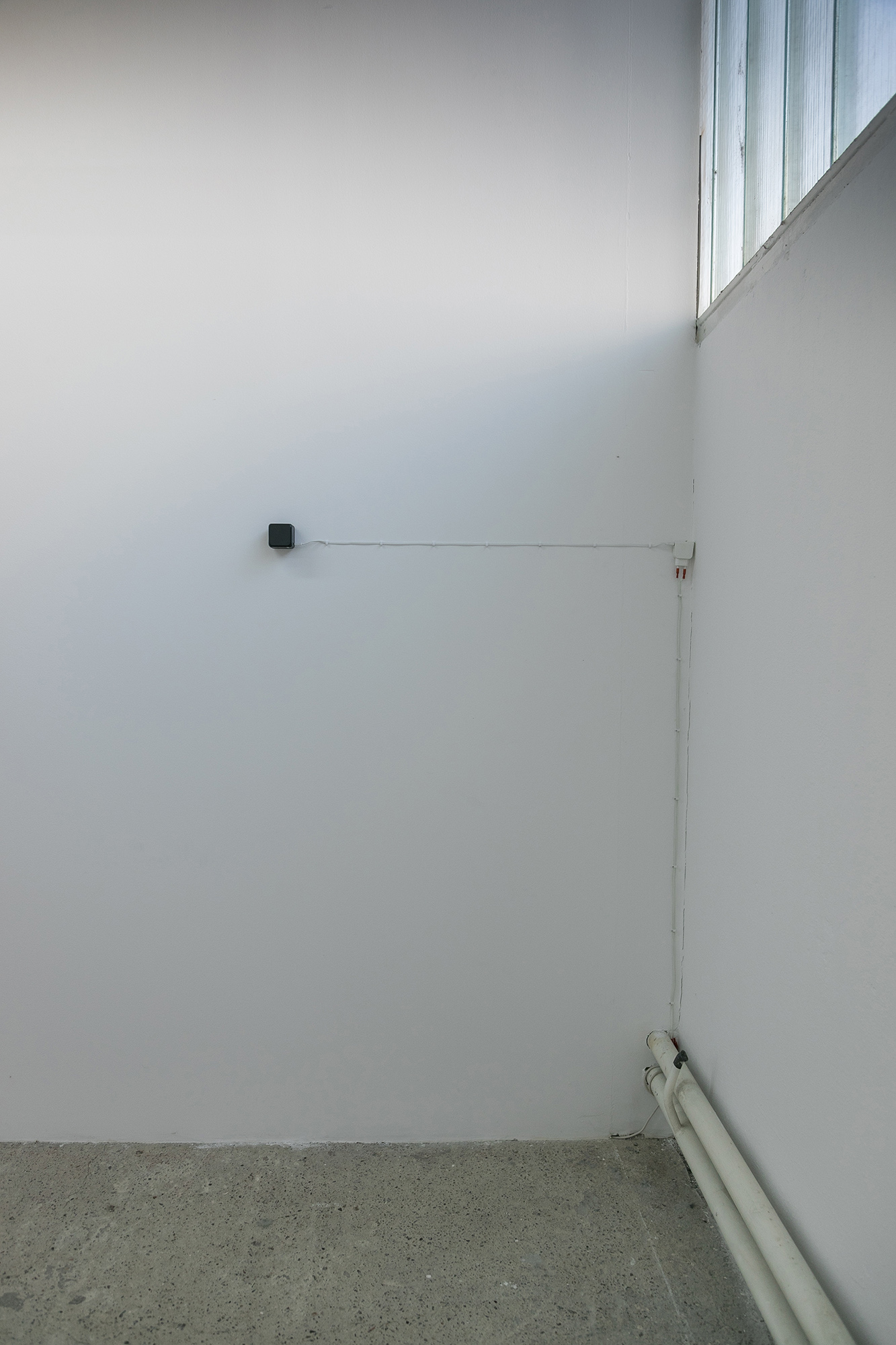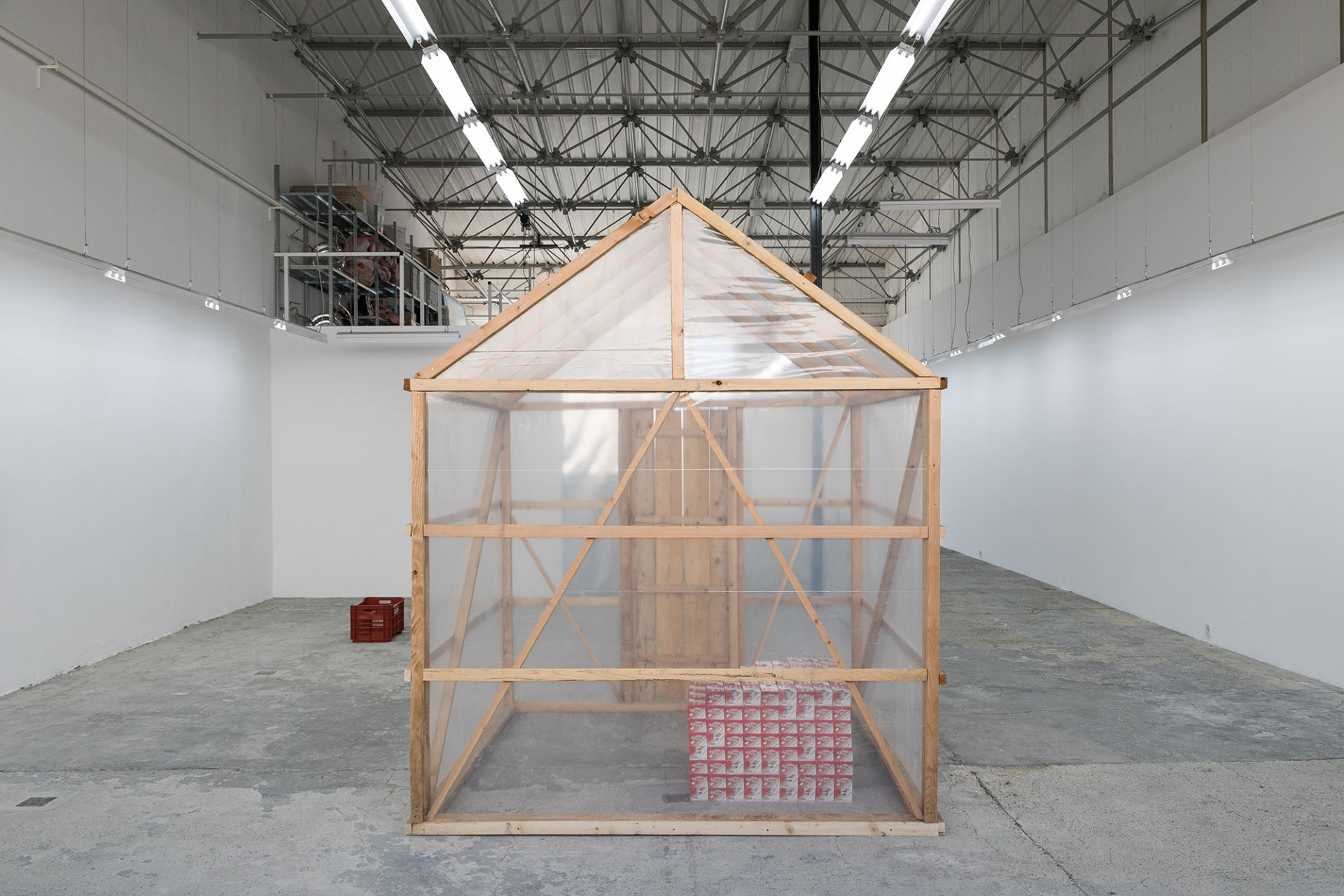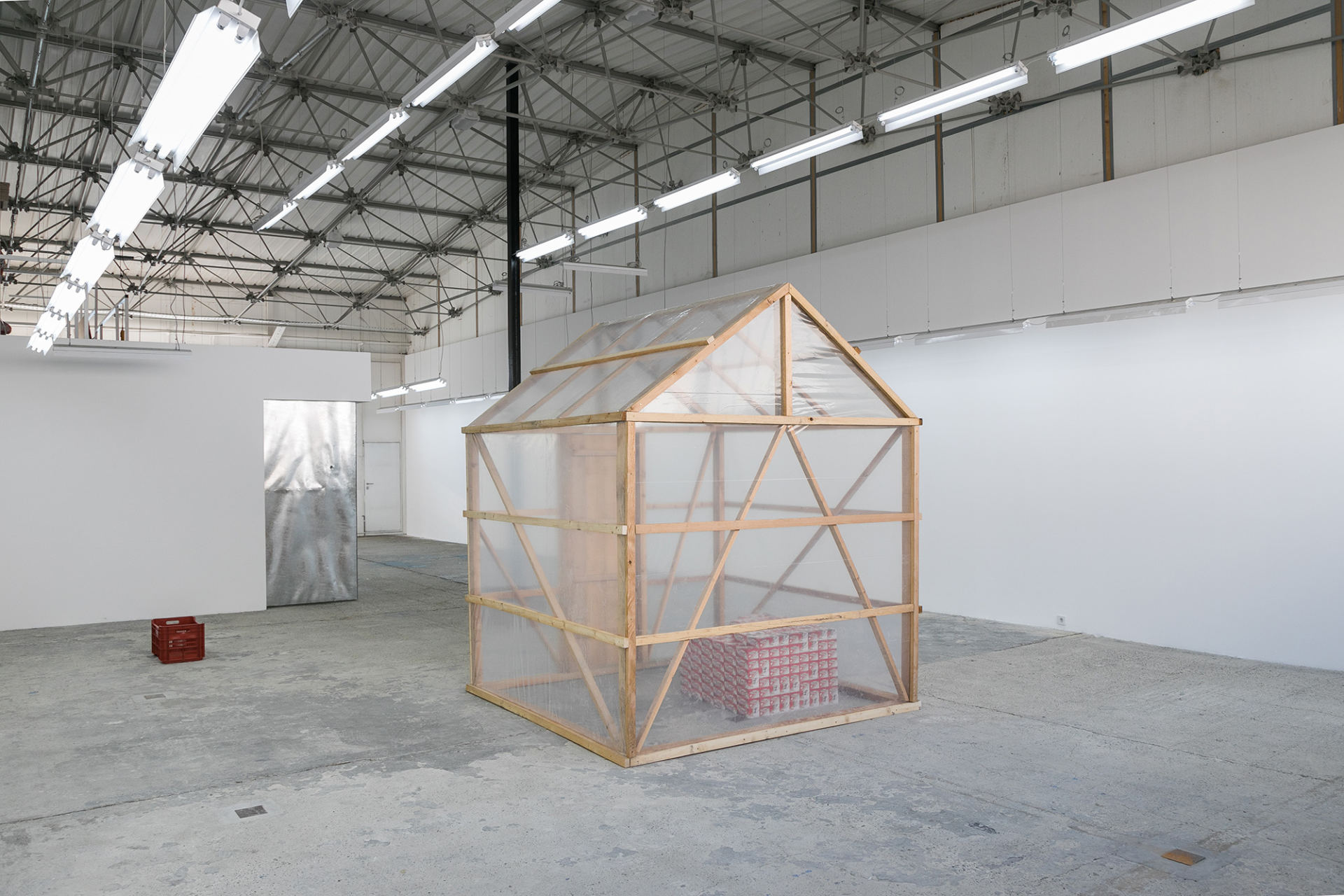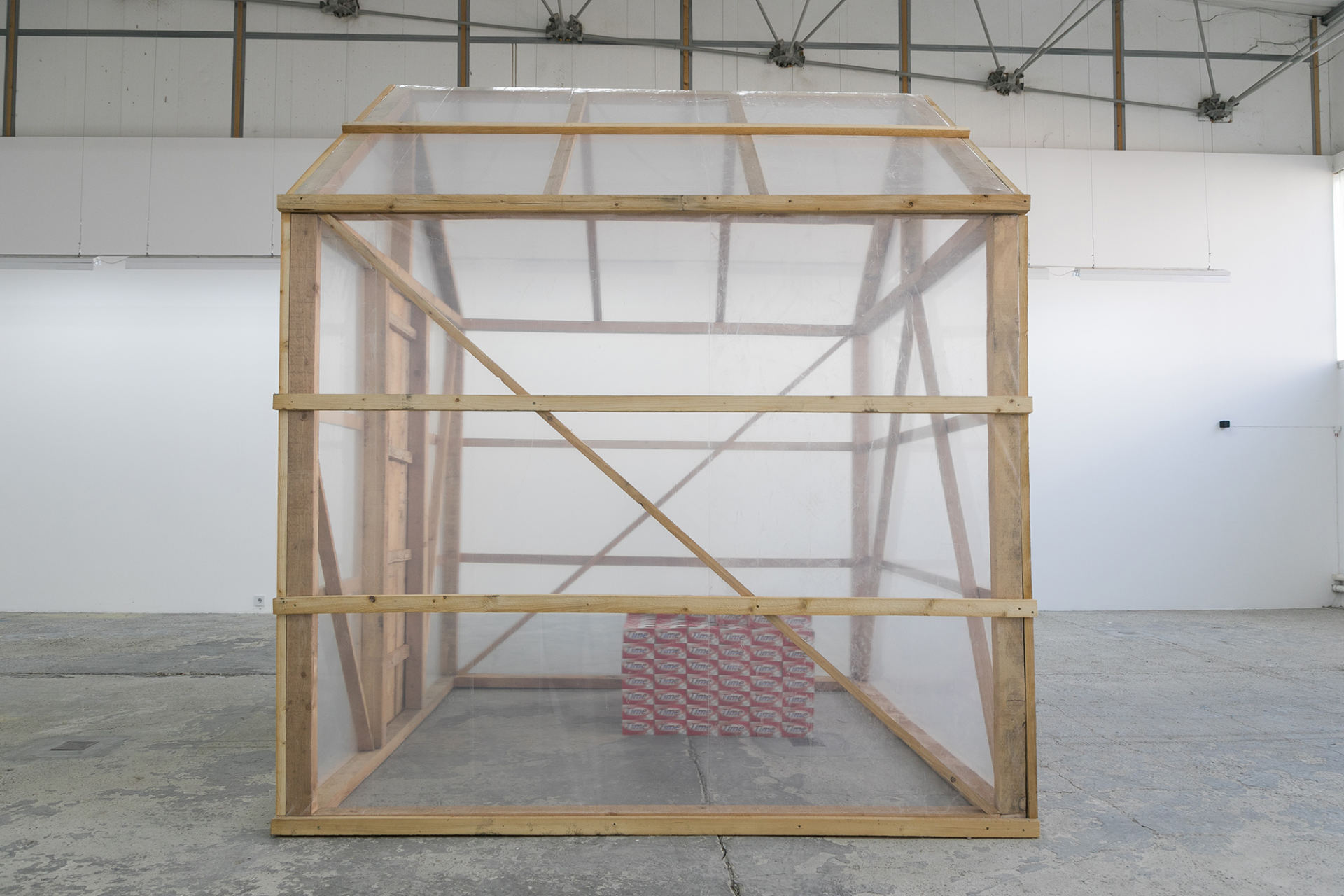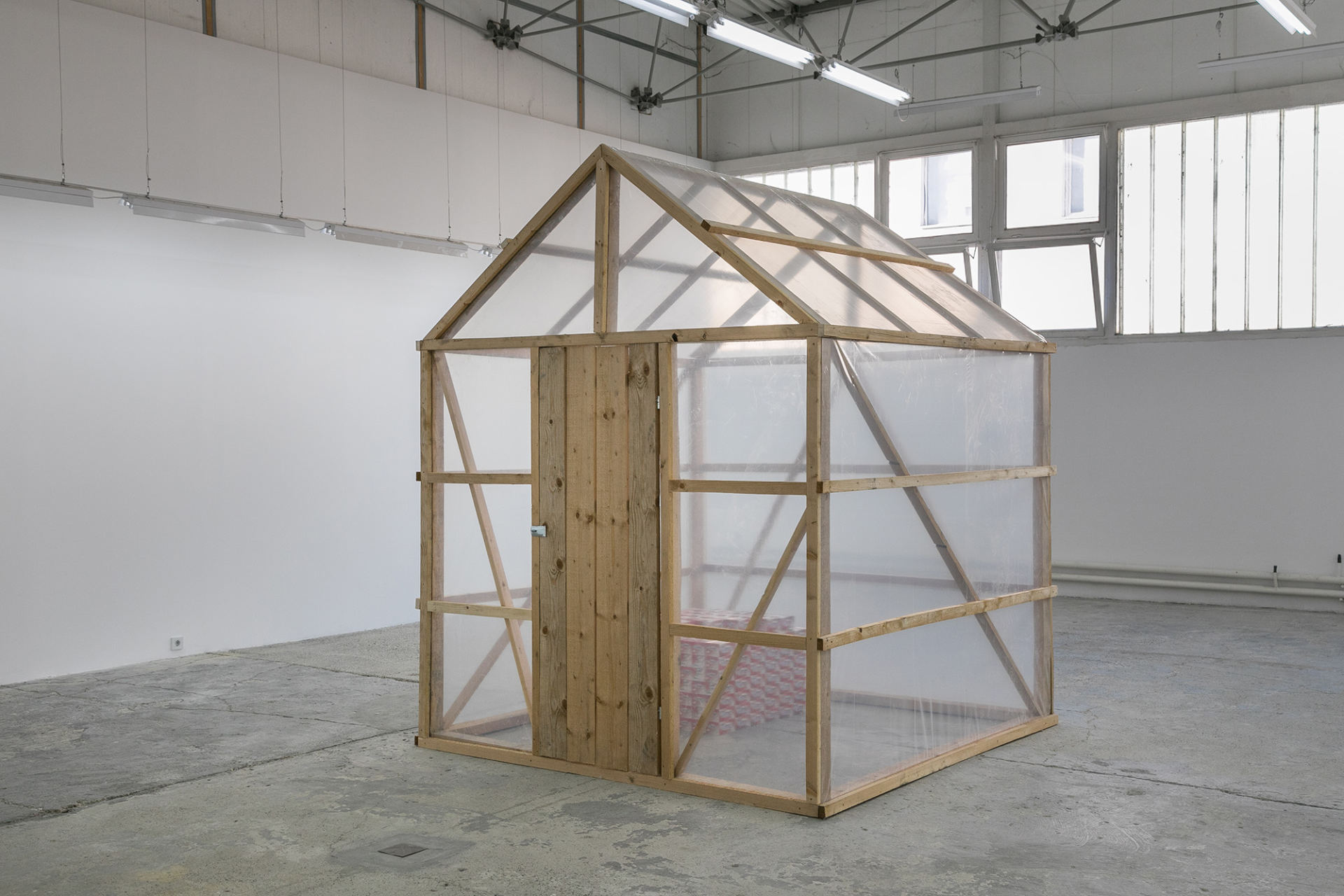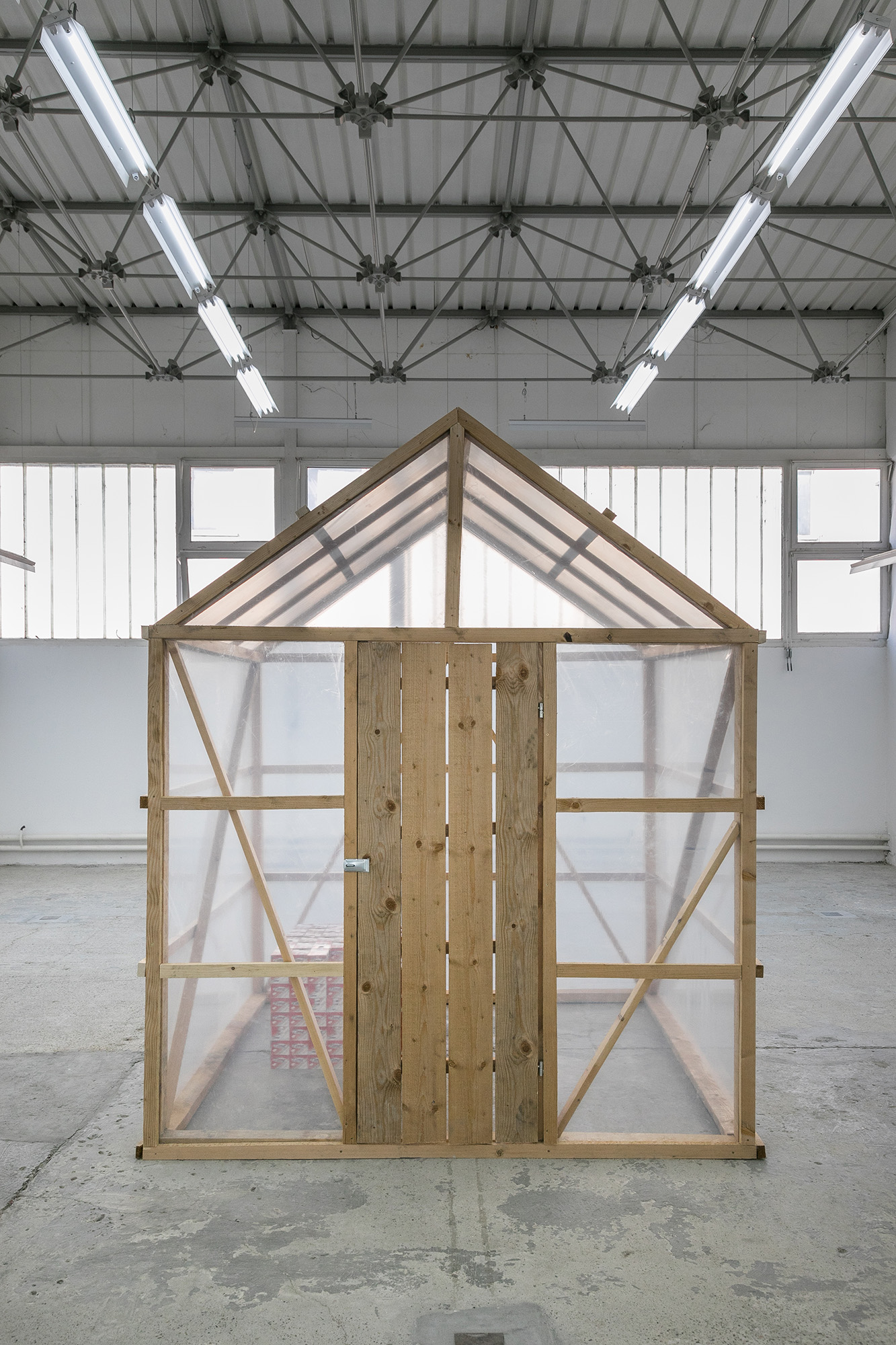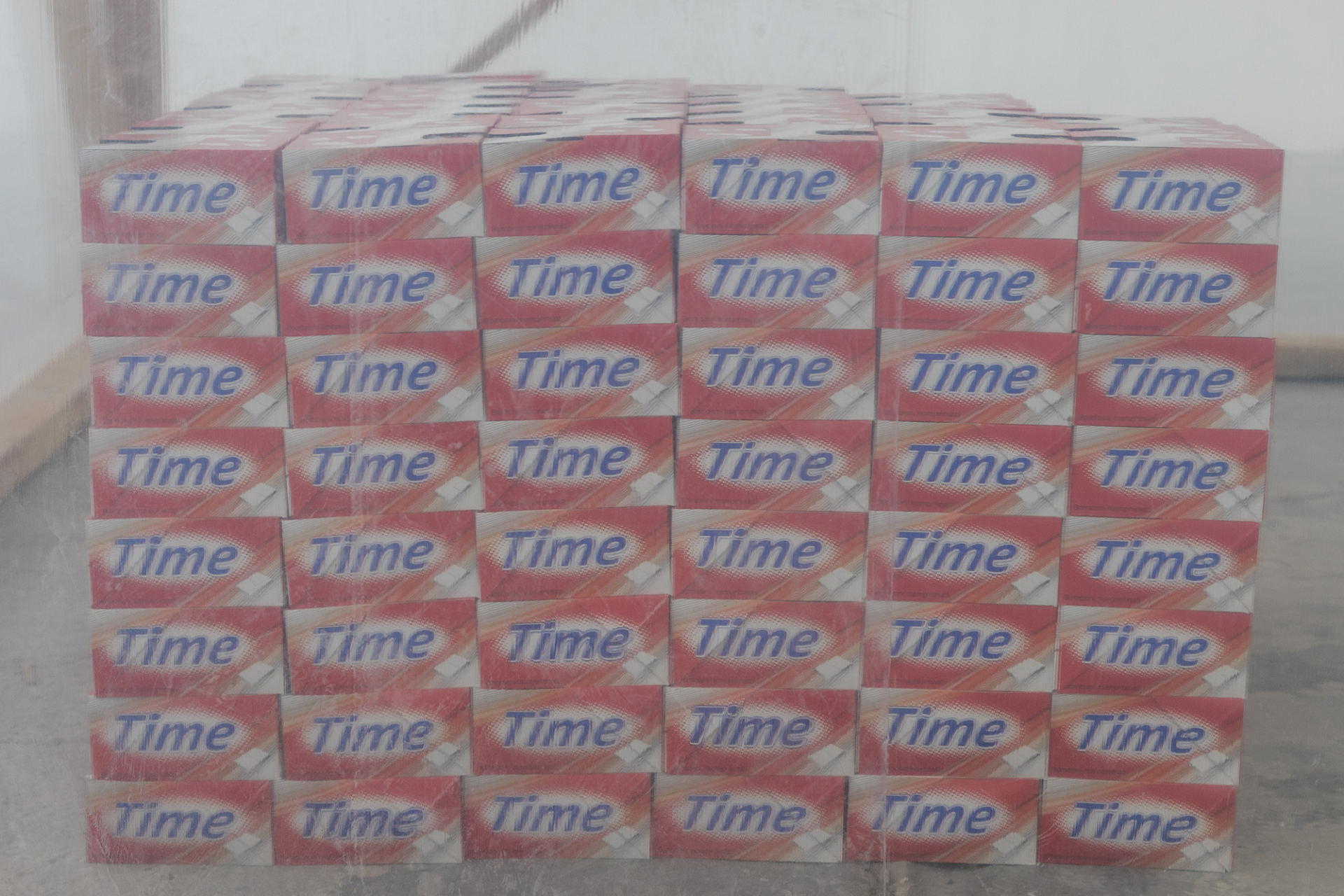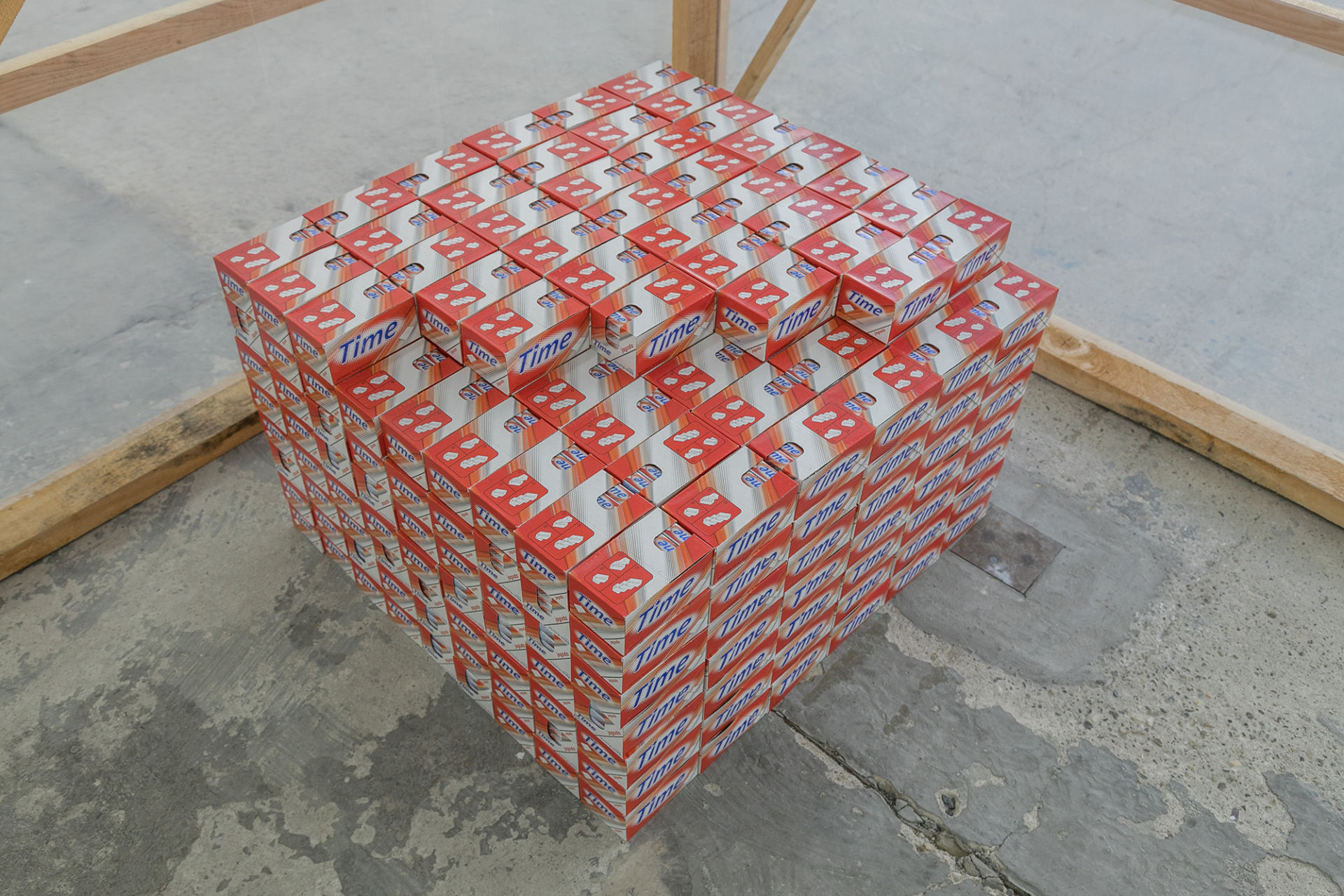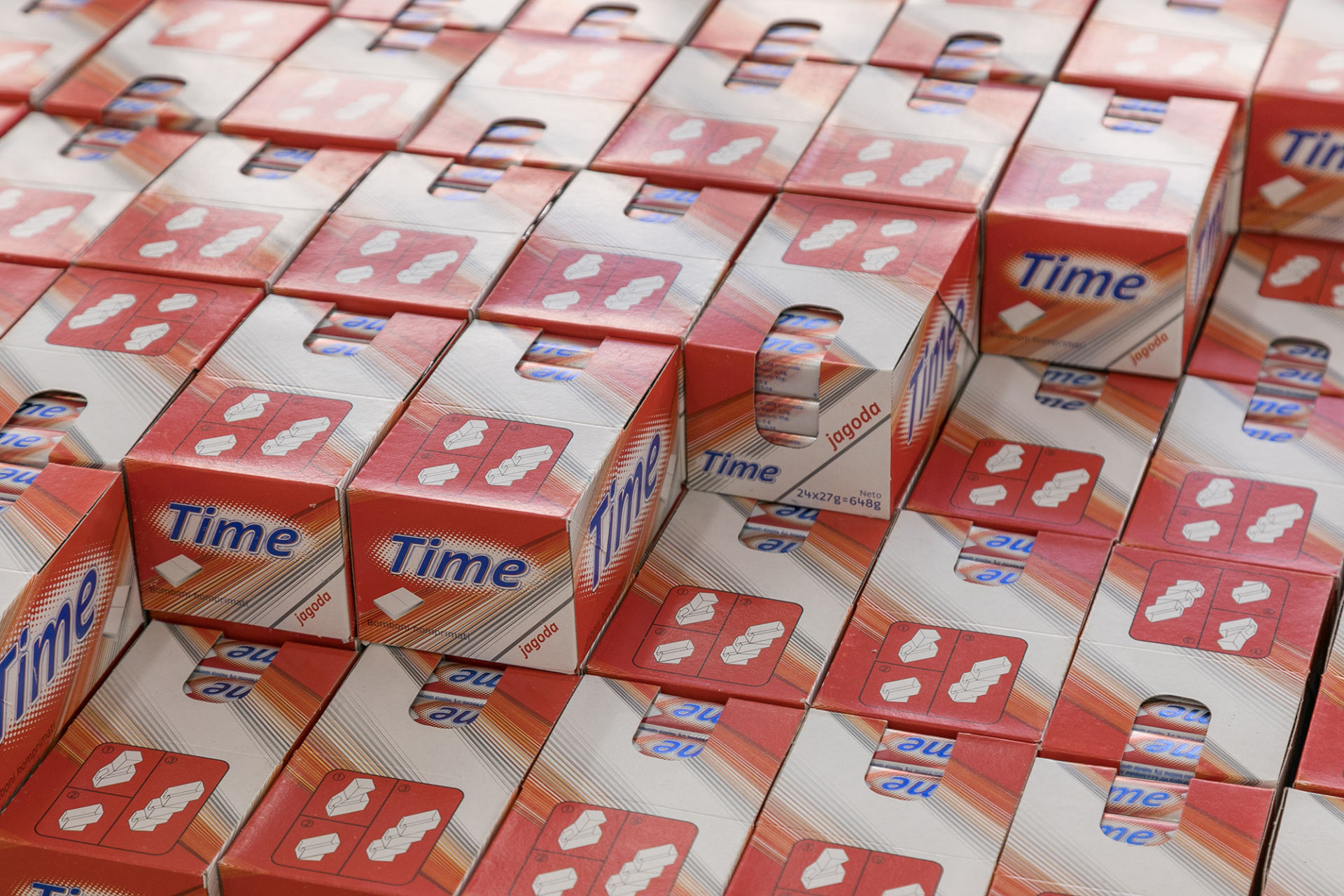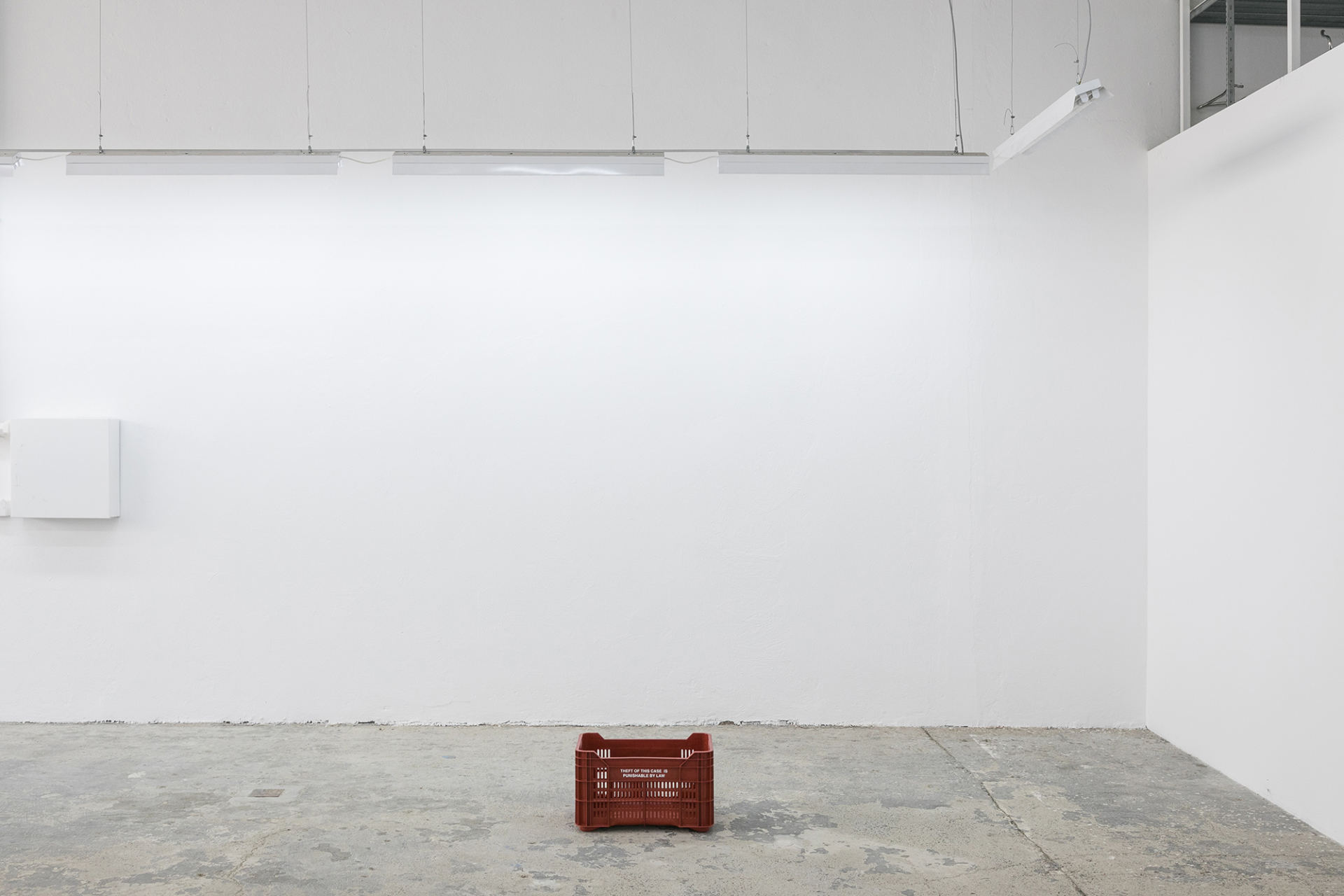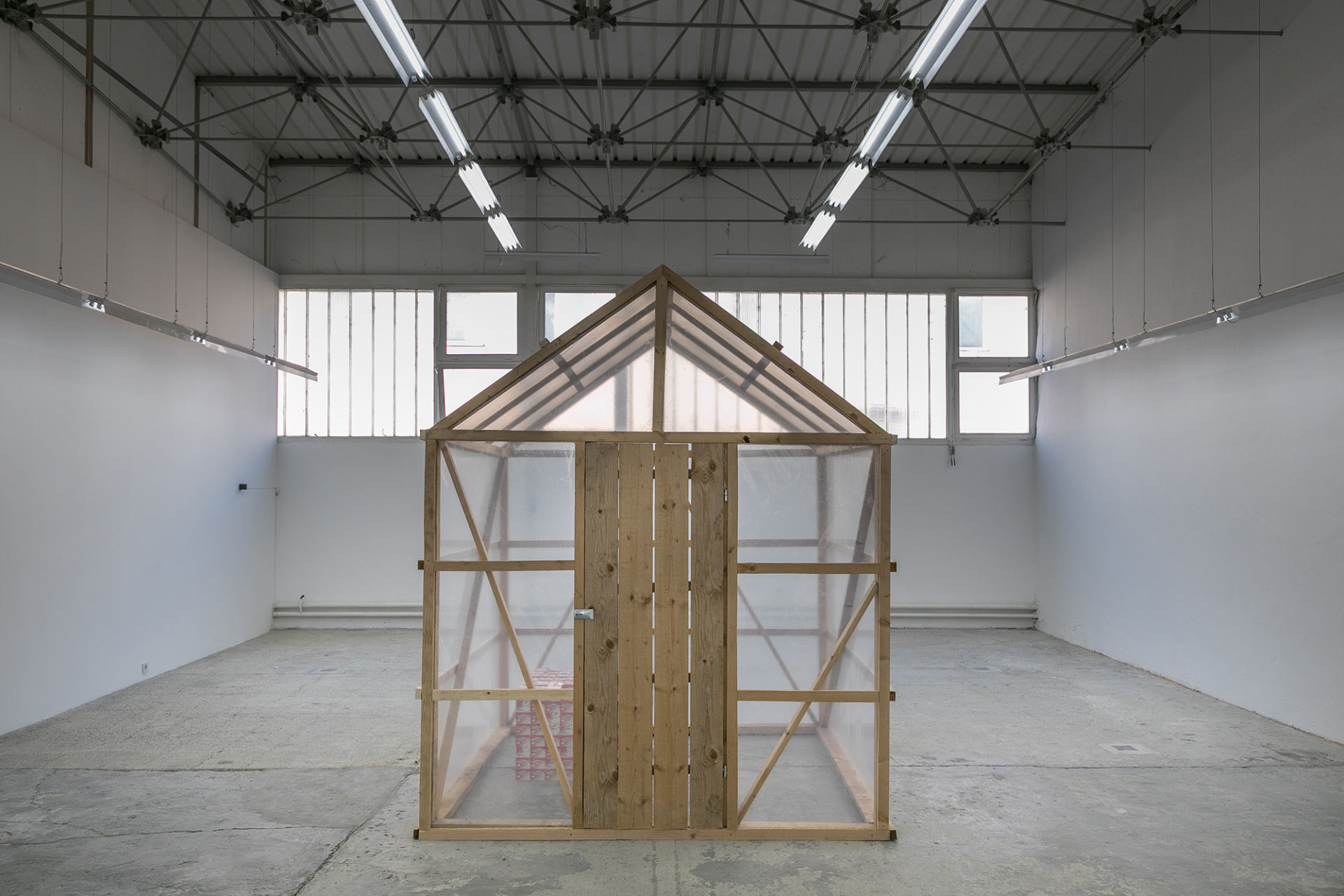Exhibition
1. Fogo Island,
March 3, 2018 – March 31, 2018
Invited to a residency on Fogo Island in Newfoundland, Canada, I spent my first days going through wild emotion. In the cottage I lived in next to the ocean, wind and water both seemed to live in my house, around me and to blend with my heart beat. I cried lots because I was grieving and had postponed it. I listened to the same Bob Dylan song with my tears conveniently coming at the same line every day. When I heated the fireplace wind was in there too within the flames. I had never lived by the sea. The extreme isolation was crisp, the landscape incandescent with snow. I saw the shed on one of my explorations into villages across the island. In hindsight I can‘t tell if the shed was effectively locked but it doesn‘t much matter to my conception of it. It consisted of a wood structure lined with plastic tarp as a storage extension to a grocery shop. Locked or not, such a structure seemed sheer unimaginable elsewhere let alone in a city. What struck me was the degree of trust and the impossibility of petty crime on an island so sparsely populated. All the things stacked inside were if faintly visible through the milky sheets. Everything will be witnessed in a community this small. Is crime – theft – extinct then? Once I saw a burnt out car on the side of the road and someone insinuated drunk driving. I am left to wonder where the energy, that I am incapable to consider entirely absent, is directed then.
2. New York City
August 15, 2010 – September 31, 2010
January 9, 2013 – January 16, 2013
January 6, 2014 – February 2, 2014
May 5, 2014 – May 16, 2014
April 1, 2015 – June 15, 2015
November 22, 2015 – December 12th 2015
June 7, 2016 – July 2, 2016
November 22, 2016 – December 21, 2016
January 16, 2017 – March 17, 2017
November 12, 2017 – December 2, 2017
February 14, 2018 – March 31, 2018
June 18, 2018 – November 6, 2018
November 19, 2018 – December 21, 2018
May 7, 2019 – June 30, 2019
Everything is at peril. The fact that I can know that of a city after so short a time is proof. Or maybe I am just telling myself a story, just like, “we are still young”. To wine about change is so pointless it breaks the sincerest of hearts. Essex market moved and good art had already been made about the development before any of us needed to render themselves conscious of it. To adapt ones attitude towards the respective moment in time is nowhere as important as here. It also is adequate to question ones owns motives for nostalgia. The box – since I called it that before I understood about milk crates – mounted on a bike seemed like such a flamboyant gesture. It made me think of DYI structures around my neighborhood where an individual takes matters in their own civilian hands to carve out a possibility against all odds to make a thing last. “Theft of this box is punishable by law”. A martial threat, if you depend on a clean vest. From the photo and after research, I understood the nature of the milk crates. They are marked by dairy farms who own them and are meant to be used again and again. What an alien concept in this economy: the preciousness of this particular plastic commodity. Although I knew now that the owner of the box had not applied the inscription themselves, the process of labelling with the explicit warning seemed to express more diligence than I was used to see around me in the city. Naturally it makes you wonder. Some school playgrounds use crates as additional climbing structures for their kids. Some people sit on them.
3. Belgrade
July 21, 2011 – July 27, 2011
August 14, 2011 – August 15, 2011
August 21, 2012 – August 26, 2012
April 28, 2013 – May 5, 2013
August 22, 2013 – August 24, 2013
September 8, 2013 – September 14, 2013
November 26, 2017 – November 31, 2017
August 26, 2019 – September 7, 2019
I was coming to Belgrade since I met Katarina. It was my first abroad, incidentally and ironically the most out of my European comfort zone and the travels of my childhood. To speak about the bruises of a city without the authenticity of life shared among them is voyeuristic. But pointing out humbly ones own radical difference through privilege is no better. It leaves everyone uncomfortable. When I came for the second or third time, it was the first time I ventured out without friends as guides to translate and still a while before I learned the alphabet. I tried to buy a ticket for the tram. After a long procedure the people that appeared to me as employees of the public transport, ushered me into the train without having me pay. I don‘t know if the system was down or if I didn‘t have the right change. A lot of the people I talked to complained about the condition of the public service. I was thinking of the sink at my university classroom back then. When it got too filled up with dirty dishes – there always was a breaking point – a pile started to grow. It wasn‘t that nobody had ever done the washing up. It was the progressed state of collective neglect – each one who had not cared – that appalled people. When you walk to the center of the old city towards Kalemegdan there is a popcorn vendor, called Pećina (cave). For me this was no small surprise. Popcorn as I came to know it growing up was firmly linked to a) cinema b) carnival and feasts. To be able to eat fresh popcorn as a street snack in Vienna you‘d have to buy it in the cinema and take it out into the streets. In Belgrade my friends and I strolled. Maybe everyone had more time then, maybe non of the people I knew had jobs. The popcorn renders the strolling through a town that looks so much like my own but with less international tourists fictional. A film. Like yet another Godard persiflage only with the link between representation and life unhinged for everyone to witness. Sve je kao san. Or: Live in your world, play in ours.
Anna-Sophie Berger
______________________________________________________________________
A new piece by Anna-Sophie Berger, ‘A Sign in Decline’, applies itself candidly to the relations between the signifier and the signified. A street sign with a face is shown in sequences, shrinking and changing its expression as it disappears into a thin line. While referring to the fragility of these relations, it also speaks to a period in which what things mean gets more obscure by the day. That we all speak a shared language (English, contemporary art) does not necessarily mean that we really understand each other.
The ambiguity of language and of gestures is potentially dangerous, so what I find germane in Anna-Sophie Berger’s practice is the precision with which words and objects are communicated. There is little wiggle room when it comes to their interpretation or even misinterpretation. With language as with sculpture – and this time also with an audio piece – she works through and about the foreign and the familiar.
‘A Sign in Decline’ belongs to the show called Time, which easily translates to the exhibition site in the former tax-free zone in Belgrade. The biggest piece in the show combines a storage shed appropriated from an island society and a candy sold in Serbia. The candy is called Time and it comes in different flavours. The Shed keeps Time protected, Time is building and filling the Shed. Structures in public spaces are based on the premise, that no one would take more than they need.
Anna-Sophie Berger understands her foreign environment through storage and transport, two basic functions in industrialized society. Both of these, as well as any encounter with the unfamiliar, assume (mutual) trust and respect. What strikes me is that there should be nothing decorative about trust and respect and that modesty is a show of good taste – speaking of signs but also of Berger’s objects. Excessive consumption is potentially harmful both with time and candy.
On our way from the airport, Anna-Sophie says that corn crops look different in Serbia. It’s not this ripe yet in Austria; in Switzerland, Jan says, it’s just a different type of corn, the leaves are always green. We pass through the fields and the highway takes us to the city.
The glow that Belgrade has, she says, reminds her of New York City.
It might just be the pollution.
Natalija Paunić
______________________________________________________________________
Anna-Sophie Berger (b.1989, Austria; lives and works in New York and Vienna) creates work that connects individual perception and intimate use with questions of material reality as part of socio-economic circulation and consumption. Populating body as much as space, her objects freely traverse sites and systems of value, physical and through image. While preserving this mobility they complicate a reading as discrete objects, encompassing elements of material transience such as decay, malleability or modularity.
Berger has presented solo exhibitions at: MUMOK, Vienna; Kunsthaus Bregenz; 21Haus, Vienna; JTT, New York and Emanuel Layr Vienna and Rome. Her work has been included in group exhibitions at: Frans Hals Museum, Haarlem; MUMOK, Vienna; S.M.AK., Gent; Kunstverein Munich; Contemporary Art Center, Vilnius; Kestnergesellschaft, Hannover; Kunsthalle Wien, Vienna; Rogaland Kunstsenter, Stavanger; Salzburger Kunstverein; 9th Berlin Biennial; Künstlerhaus, Halle für Kunst & Medien KM-, Graz. She is the recipient of the ars viva award 2018 and of the 2017 First Kapsch Contemporary Art Prize.
